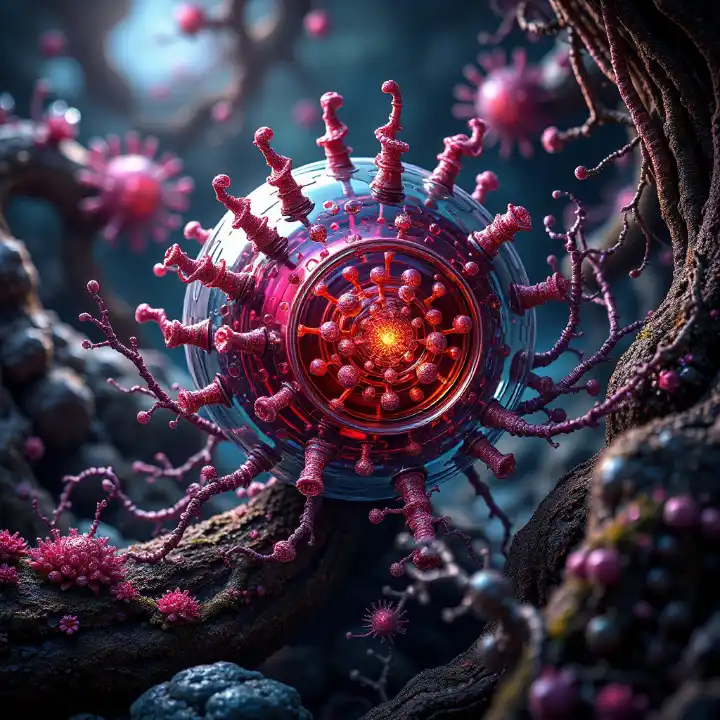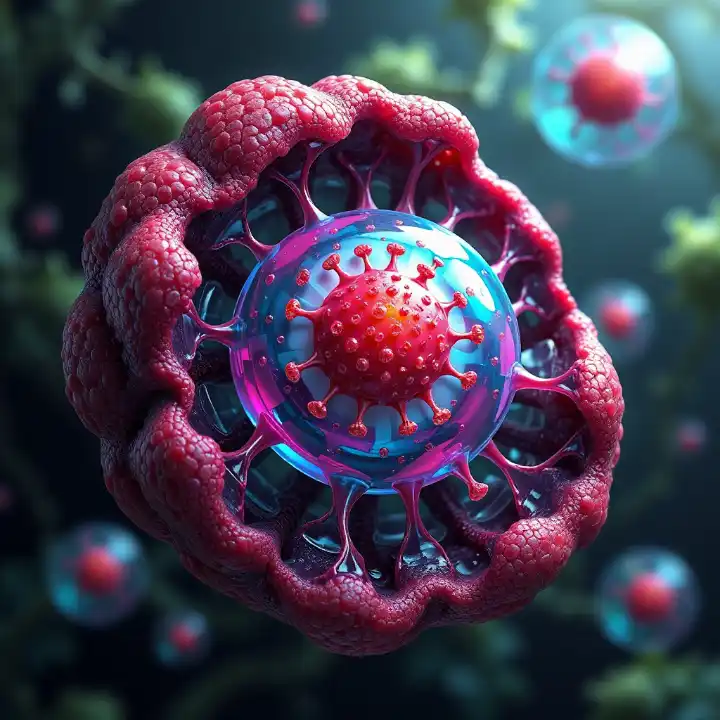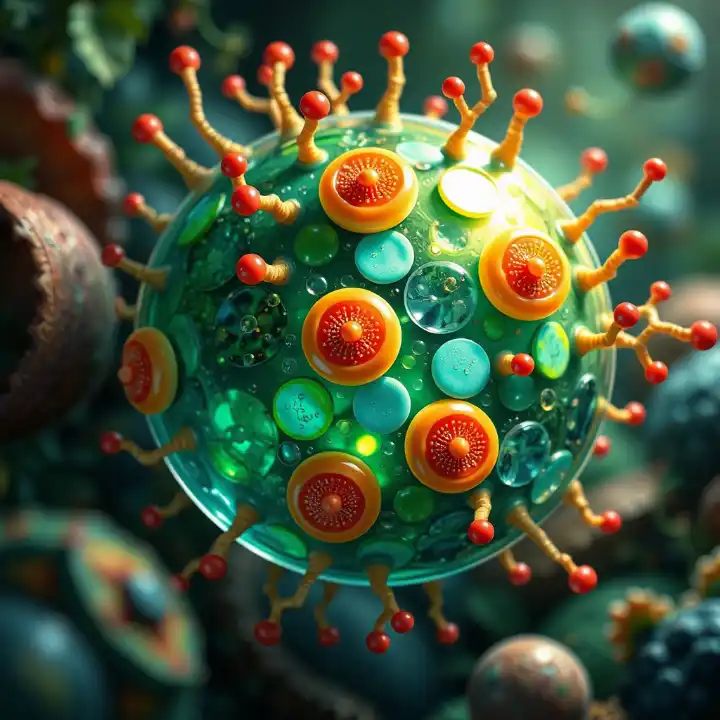What Is Seminoma? A Simple Explanation

Seminoma is a type of testicular cancer that develops in the germ cells, which produce sperm. 🎯 Learn more in our Cancer Types Directory. It accounts for a significant portion of testicular cancer cases and typically grows at a slow pace. You might find it reassuring to know that seminoma often responds well to treatment, leading to a favorable prognosis. This type of cancer is most common in young and middle-aged men, making awareness crucial for early detection and effective care.
Key Takeaways
Seminoma is a slow-growing cancer in the testicles. It usually responds well to treatment, giving a good chance of recovery.
Men aged 25 to 45 have the highest risk of seminoma. Checking yourself regularly can help find early signs like painless lumps or swelling.
Treatments for seminoma include surgery, radiation, and chemotherapy. Finding it early makes treatment work better.
Your chances of getting seminoma are higher if you have certain genes or a family history of testicular cancer. Knowing these risks is important.
Staying healthy and avoiding harmful things can lower your risk of seminoma and keep you healthier overall.
Understanding Seminoma
What Is Seminoma?
Seminoma is a type of testicular cancer that originates in germ cells, the cells responsible for producing sperm. It is one of the most common forms of testicular cancer and is known for its slow growth. This characteristic often makes it easier to detect and treat successfully. You might find it interesting that seminoma typically affects only one testicle, although it can occasionally spread to nearby lymph nodes or other parts of the body.
Doctors classify seminoma as a germ cell tumor, which means it develops from the reproductive cells in the testicles. This type of cancer is unique because it often responds well to treatments like surgery, radiation, or chemotherapy. Early detection plays a key role in ensuring a positive outcome.
How Does Seminoma Differ From Other Testicular Cancers?
Seminoma differs from other testicular cancers in several ways. It grows more slowly compared to non-seminomatous germ cell tumors (NSGCTs), which are another common type of testicular cancer. NSGCTs tend to spread more quickly and may require more aggressive treatment. Seminoma also tends to occur in slightly older men, while NSGCTs are more common in younger individuals.
Another difference lies in how seminoma responds to treatment. It is highly sensitive to radiation and chemotherapy, which often leads to excellent survival rates. In contrast, NSGCTs may require a combination of treatments, including surgery and chemotherapy, to achieve similar outcomes.
Who Is Most at Risk for Seminoma?
Certain factors increase your risk of developing seminoma. Men between the ages of 25 and 45 are most commonly affected. If you have a history of an undescended testicle (cryptorchidism), your risk may be higher. A family history of testicular cancer can also increase your chances of developing seminoma.
Other risk factors include having a personal history of testicular cancer or certain genetic conditions. While these factors may raise your risk, it’s important to remember that seminoma remains a rare condition. Regular self-examinations and awareness of any changes in your testicles can help with early detection.
Characteristics of Seminoma
Growth and Spread
Seminoma grows at a slower pace compared to other types of testicular cancer. This slow growth often makes it easier to detect and treat in its early stages. You might notice that seminoma typically starts in one testicle and remains localized for some time. However, if left untreated, it can spread to nearby lymph nodes, especially those in the abdomen. In advanced cases, it may also reach distant organs like the lungs or liver.
Doctors often describe seminoma as highly treatable because of its sensitivity to radiation and chemotherapy. These treatments effectively target cancer cells, even if the disease has spread. Early detection plays a crucial role in preventing the spread and improving outcomes.
Common Age of Onset
Seminoma most commonly affects men between the ages of 25 and 45. This age range makes it one of the leading cancers in younger men. If you fall within this group, regular self-examinations can help you detect any unusual changes early.
Interestingly, seminoma rarely occurs in older men, but when it does, it often presents as a different subtype called spermatocytic seminoma. This subtype typically affects men over the age of 50.
Types of Seminoma
Classic Seminoma
Classic seminoma is the most common type, accounting for the majority of seminoma cases. It usually develops in men aged 25 to 45. This type grows slowly and responds well to treatments like surgery, radiation, and chemotherapy. If you detect it early, the chances of a full recovery are very high.
Spermatocytic Seminoma
Spermatocytic seminoma is much rarer and tends to occur in older men, typically over the age of 50. Unlike classic seminoma, this type grows even more slowly and rarely spreads to other parts of the body. Treatment often involves surgery, and additional therapies are usually unnecessary.
Tip: Regular self-checks and awareness of your body can help you detect seminoma early, regardless of its type.
Causes and Risk Factors of Seminoma
Genetic Factors
Your genetic makeup can influence your risk of developing seminoma. Certain inherited conditions or genetic mutations may increase the likelihood of this cancer. For example, abnormalities in chromosomes, such as changes in chromosome 12, are often linked to testicular cancer. If you have a family history of seminoma or other testicular cancers, your risk may also be higher. This connection highlights the importance of knowing your family’s medical history and discussing it with your doctor.
Environmental and Lifestyle Factors
Environmental and lifestyle factors can also play a role in seminoma development. Exposure to certain chemicals or toxins, such as pesticides, may increase your risk. Some studies suggest that smoking or a sedentary lifestyle could contribute to testicular cancer. Maintaining a healthy lifestyle, including regular exercise and a balanced diet, may help reduce your risk. While these factors are not direct causes, they can influence your overall health and susceptibility to cancer.
Note: Avoiding harmful substances and adopting healthy habits can benefit your overall well-being.
Conditions That Increase Risk
Undescended Testicle (Cryptorchidism)
If one or both of your testicles did not descend into the scrotum at birth, your risk of seminoma may be higher. This condition, known as cryptorchidism, is one of the most significant risk factors. Even if the testicle was surgically corrected, the risk remains elevated. Regular check-ups with your doctor can help monitor your health.
Family History of Testicular Cancer
A family history of testicular cancer can increase your chances of developing seminoma. If your father or brother had testicular cancer, your risk may be higher. This connection emphasizes the importance of being proactive about your health. Regular self-examinations and early discussions with a healthcare provider can make a significant difference.
Symptoms of Seminoma

Early Symptoms
Painless Lump in the Testicle
One of the earliest signs of seminoma is a painless lump in the testicle. You might notice a small, firm mass that feels different from the surrounding tissue. This lump often goes unnoticed because it doesn’t cause pain. Regular self-examinations can help you detect such changes early. If you feel anything unusual, consulting a doctor promptly is essential.
Swelling or Enlargement of the Testicle
Swelling or an increase in the size of one testicle is another common early symptom. You may observe that one testicle feels heavier or looks larger than usual. This change might occur gradually, making it easy to overlook. Paying attention to these subtle differences can help you catch seminoma in its early stages.
Tip: Perform monthly self-examinations to check for lumps, swelling, or other changes in your testicles. Early detection improves treatment outcomes.
Advanced Symptoms
Pain or Discomfort in the Scrotum
As seminoma progresses, you might experience pain or discomfort in the scrotum. This sensation could range from mild aching to sharp pain. Sometimes, the discomfort spreads to the groin area. If you feel persistent pain, seeking medical advice is crucial.
Back Pain or Abdominal Discomfort
In advanced cases, seminoma may spread to lymph nodes in the abdomen. This can cause back pain or a feeling of pressure in your lower abdomen. You might also notice unexplained weight loss or fatigue. These symptoms indicate that the cancer has progressed and requires immediate medical attention.
Note: Advanced symptoms often signal that the cancer has spread. Early detection can prevent this progression and improve your prognosis.
Diagnosis and Treatment of Seminoma

How Is Seminoma Diagnosed?
Physical Examination
Your doctor will begin by performing a physical examination. They will check for lumps, swelling, or any abnormalities in your testicles. This step helps identify potential signs of seminoma and determines whether further tests are necessary.
Imaging Tests (Ultrasound, CT Scan)
Imaging tests play a crucial role in diagnosing seminoma. An ultrasound is often the first imaging test used. It provides detailed images of your testicles, helping your doctor distinguish between benign and malignant masses. If further evaluation is needed, a CT scan may be performed to check for cancer spread.
Study | Findings |
|---|---|
Tsatalpas et al. (2002) | Evaluated the diagnostic value of 18F-FDG PET for malignant germ cell tumors. |
Cremerius et al. (1999) | Investigated if PET improves clinical staging of testicular cancer in 50 patients. |
Spermon et al. (2002) | Discussed the role of PET in initial staging and re-staging after chemotherapy for testicular germ cell tumors. |
Hinz et al. (2008) | Examined PET's role in evaluating residual masses after chemotherapy for advanced stage seminoma. |
Blood Tests for Tumor Markers
Blood tests help detect tumor markers like beta-hCG and LDH, which are often elevated in seminoma cases. These markers assist in confirming the diagnosis and monitoring treatment progress.
Treatment Options for Seminoma
Surgery (Orchiectomy)
The standard treatment for seminoma is a radical inguinal orchiectomy. This outpatient procedure involves removing the affected testicle. It not only treats the cancer but also helps determine its stage and guides further treatment.
Radical inguinal orchiectomy is the primary surgical procedure.
It is essential for both diagnosis and treatment.
The surgery is typically performed on an outpatient basis.
Radiation Therapy
Radiation therapy is highly effective for seminoma, especially in early stages. It targets cancer cells in the testicle and nearby lymph nodes.
Treatment Type | 2-Year Relapse-Free Survival Rate | 3-Year Relapse-Free Survival Rate | Side Effects | Second Primary Tumors Rate |
|---|---|---|---|---|
Radiotherapy | 95.9% | More lethargy | 1.96% | |
Carboplatin | 97.7% | 94.8% | Less lethargy | 0.54% |
Chemotherapy
Chemotherapy is often used for advanced seminoma or when cancer has spread. It involves medications that destroy cancer cells throughout your body. This treatment is highly effective and improves survival rates significantly.
Prognosis and Survival Rates
Seminoma has an excellent prognosis, especially when detected early. Studies show high survival rates even in advanced cases. For instance, the PRIMETEST trial reported a 70% progression-free survival rate over 32 months for clinical stage IIA/B patients. Another study on retroperitoneal lymphadenopathy showed a 100% two-year overall survival rate.
Study Description | Follow-up Duration | Progression-Free Survival Rate | Overall Survival Rate |
|---|---|---|---|
PRIMETEST trial (33 patients, clinical stage IIA/B) | 32 months | 70% | N/A |
RPLND study (55 patients, isolated retroperitoneal lymphadenopathy) | 33 months | N/A | 100% (2-year overall survival) |
Tip: Early detection and treatment significantly improve your chances of a full recovery.
Seminoma is a type of testicular cancer that grows slowly and responds well to treatment. You’ve learned about its characteristics, risk factors, symptoms, and effective treatment options like surgery, radiation, and chemotherapy. Early detection plays a vital role in achieving excellent outcomes.
Remember: Most seminoma cases have a favorable prognosis when treated early. Regular self-examinations and awareness of changes in your testicles can make a big difference.
If you notice any unusual symptoms or have concerns, consult a healthcare professional promptly. Taking action early ensures the best possible care and peace of mind.
FAQ
What should you do if you find a lump in your testicle?
You should consult a healthcare professional immediately. A lump could indicate seminoma or another condition. Early evaluation ensures timely diagnosis and treatment, improving your chances of recovery.
Can seminoma affect both testicles?
Seminoma usually affects only one testicle. However, in rare cases, it can develop in both. Regular self-examinations and medical check-ups help detect any abnormalities early.
Is seminoma hereditary?
A family history of testicular cancer may increase your risk of seminoma. If your father or brother had testicular cancer, you should discuss this with your doctor and monitor your health closely.
How can you reduce your risk of seminoma?
You can reduce your risk by maintaining a healthy lifestyle. Avoid harmful substances, exercise regularly, and perform monthly self-examinations. Early detection plays a key role in prevention.
Does treatment for seminoma affect fertility?
Treatment, especially surgery or chemotherapy, may impact fertility. You should discuss sperm banking with your doctor before starting treatment if you plan to have children in the future.
Tip: Always ask your doctor about potential side effects of treatment and available options to preserve fertility.
See Also
Understanding Embryonal Carcinoma: Essential Information You Should Know
Ependymoma Overview: Symptoms and Important Information Uncovered
Acute Myeloid Leukemia: A Clear and Concise Overview
